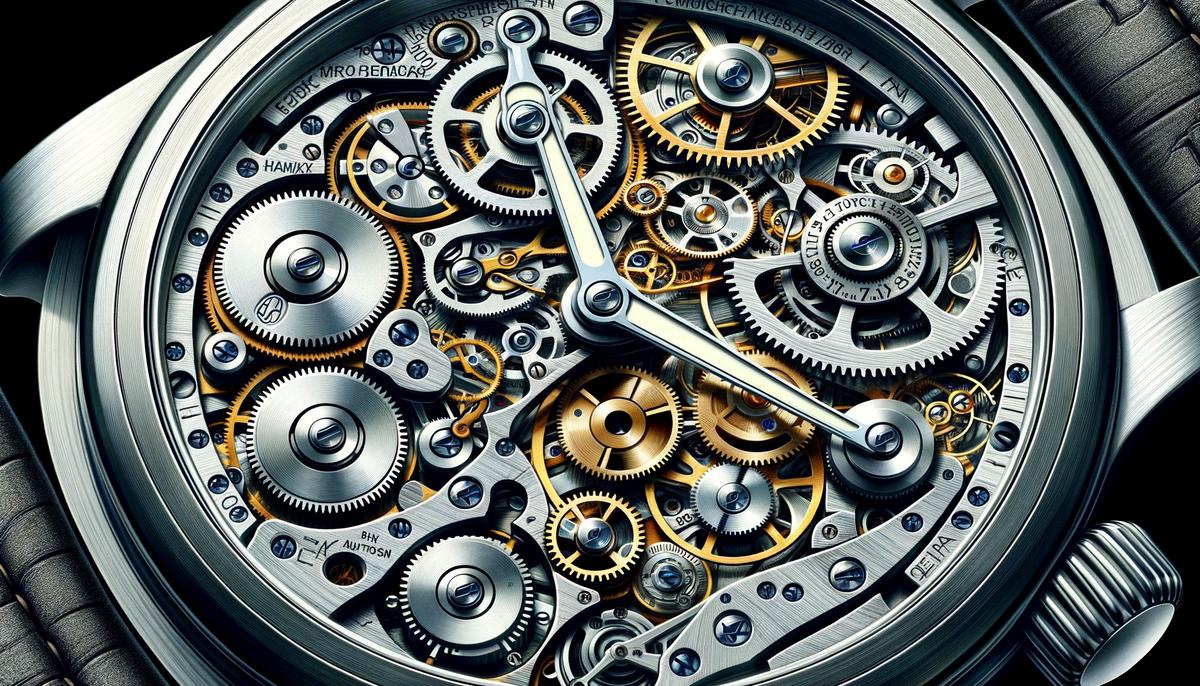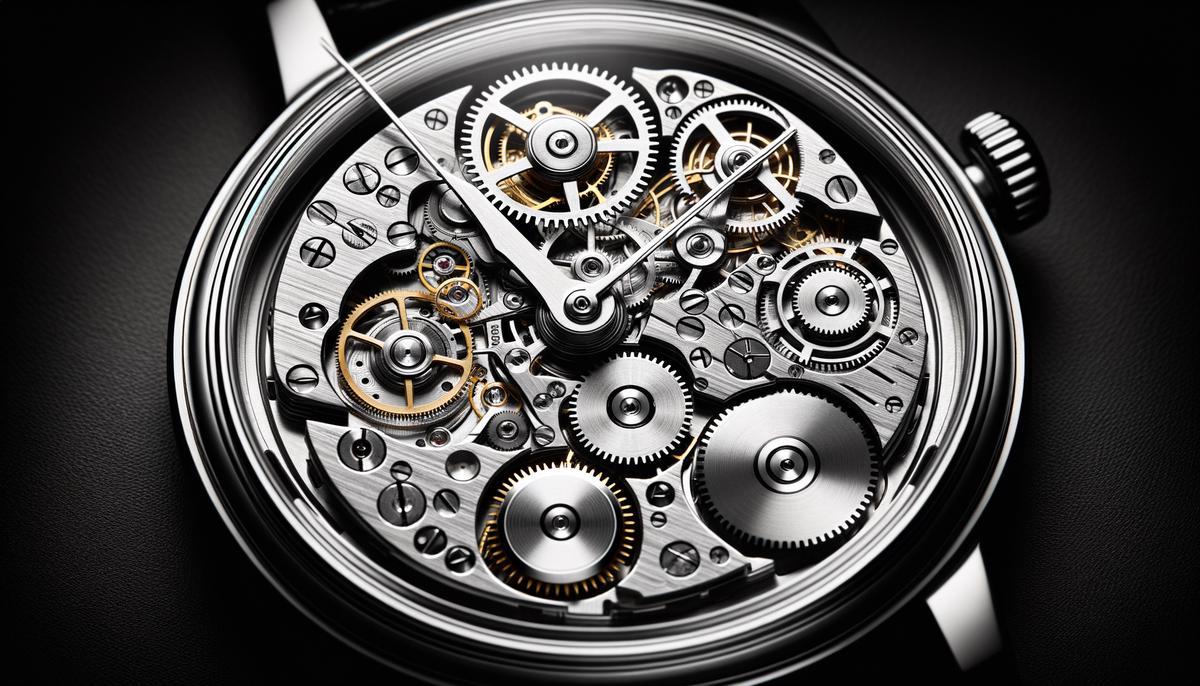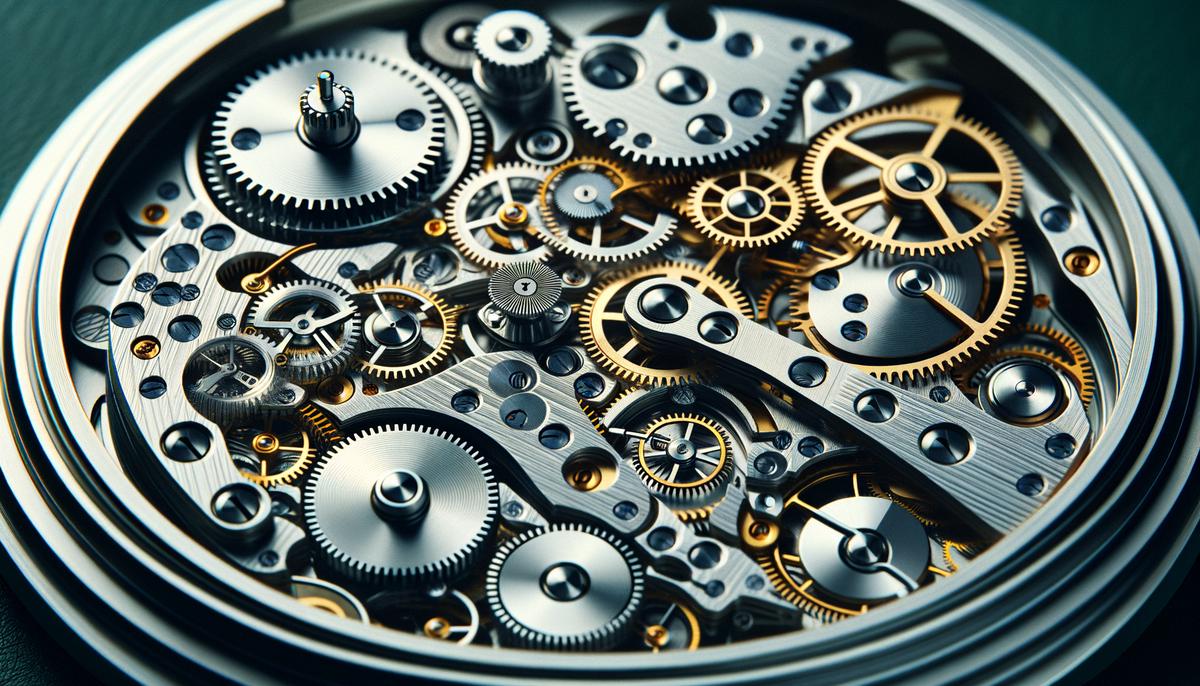Automatic watches stand as a testament to the ingenious application of physical principles and careful engineering, all aimed at keeping accurate time without the need for manual winding or batteries. This article sheds light on how these timepieces function, their longevity, and the necessary care they require, offering insights into the precision and dedication behind each watch. By understanding these aspects, one can appreciate the value and beauty of automatic watches in a new light.
The Mechanics of Automatic Movement
An automatic watch, also known as a self-winding watch, harnesses the power of the wearer’s movements to wind itself. When you move your wrist, a rotor inside the watch spins, transferring energy to wind the mainspring, which is the heart of the watch’s power source.
The rotor, attached to the movement, swings in a circular motion as the wrist moves. This rotor is connected to gears which, when moved, gradually wind the mainspring. The more you move, the more energy is stored, keeping the watch active without needing manual winding.
Energy transferred from the rotor to the mainspring is regulated through a series of gears to ensure the watch functions smoothly and keeps accurate time. This system balances the energy, preventing the watch from overwinding as well as distributing power evenly.
A piece called the escapement manages this energy release. It releases the stored energy in controlled bursts, which then move the watch’s hands. This escapement makes sure that the energy from the mainspring gets used in a way that keeps time consistently.
Additionally, there’s a device known as a balance wheel, working alongside the escapement. This wheel oscillates back and forth at a constant rate, further controlling the energy release and ensuring timekeeping is precise.
Because automatic watches rely on wrist movement, they can stop if not worn for some days. However, many come equipped with a power reserve to keep the watch running for a period even while not on the wrist.
The intricacy of these components working together highlights the craftsmanship and engineering behind each automatic watch. The process elegantly combines physics with meticulous design to keep time in motion, all without batteries or manual winding. This self-sufficiency is a hallmark of traditional watchmaking that continues to charm enthusiasts and casual wearers alike.

The Lifespan of Automatic Watches
Automatic watches capture the essence and history of watchmaking, embodying both technical sophistication and timeless elegance. The lifetime of these mechanical marvels, if well-maintained, can effortlessly span decades, often becoming cherished family heirlooms passed down through generations. The secret to their longevity lies not just in their initial quality but in the ongoing care and maintenance they receive.
Craftsmanship quality sits at the heart of an automatic watch’s lifespan. Watches crafted from premium materials and with meticulous attention to detail are more likely to endure the test of time. The choice of metal for the case, type of glass, and even the strap material plays a significant role in longevity. Stainless steel, titanium, and ceramics are popular for their durability and resistance to wear and tear.
Maintenance practices are pivotal in extending the life of an automatic watch. Regular servicing, recommended every 3 to 5 years, ensures the movement remains in optimal condition. During servicing, a specialist cleans the mechanism, replaces any worn components, and applies lubrication to reduce friction. This preventative care helps avoid significant repairs that can arise from neglect.
The environment in which an automatic watch operates can greatly influence its durability. Exposure to extreme temperatures, moisture, and magnetic fields can impair a watch’s performance. A day at the beach or a session in a steam room may seem harmless, but saltwater and steam can corrode metal and compromise seals. Likewise, strong magnetic fields from speakers, refrigerators, or laptops can disturb the movement, affecting accuracy.
Shock resistance is another critical factor. Automatic watches contain small, delicate parts that can be damaged from sudden impacts or vibrations. While modern watches incorporate shock-absorbing technology, it’s best to remove your watch during high-impact activities like sports.
Water resistance is a feature that adds an extra layer of protection, but it’s not permanent. Over time, seals and gaskets that keep water out age and wear out, requiring replacement. Always ensure that crown and case-back are properly sealed after a battery change or servicing.
Personal usage habits can also affect a watch’s longevity. Consistent wearing keeps the movement active and lubricated, while prolonged periods of inactivity can cause oils to settle or congeal, affecting performance. For those who rotate between watches, watch winders provide gentle movement to keep the watch running when not in use.
Budgeting for occasional repairs is part and parcel of owning an automatic watch. Just as a car needs oil changes and brake pad replacements, a watch might need part replacements or adjustments beyond regular servicing to keep it in top form.
In essence, the combination of initial quality, regular care, and mindful use will dictate how long an automatic watch can tick. Ensuring these timepieces receive the attention they deserve not only upholds their function but also preserves their story for future generations to cherish.

Servicing and Maintenance of Automatic Watches
Servicing an automatic watch every 3 to 5 years is crucial, akin to taking a car for regular oil changes to ensure smooth operation. This interval keeps the intricate machinery inside working effectively. A typical watch service includes taking the watch apart, meticulously cleaning each component, re-lubricating to prevent friction and wear, and putting it all back together. This procedure ensures every part functions as intended, maintaining the watch’s accuracy and longevity.
Dust, dirt, and old lubricant can clog an automatic watch, causing it to run inaccurately or stop entirely. A professional watch technician conducting a service will use specialized tools and solutions to clean each part, from the tiniest screw to the balance wheel. After cleaning, each component receives fresh lubrication. High-quality synthetic oils ensure smooth operation and protection against wear and tear., Tailoring the lubrication to the watch’s specific needs is essential for preserving its precision.
Reassembly follows, with a focus on ensuring that all cleaned and lubricated parts work in harmony. The technician must possess a keen eye for detail, as even a minor mistake during reassembly can affect the watch’s performance. After reassembly, the watch undergoes calibration. Its timing adjusted to ensure it keeps time within expected tolerances.
Besides mechanical servicing, the watch case and bracelet need attention too. Polishing and cleaning restore their shine but remember, excessive polishing can wear down the material, especially if done frequently over several years.
Wear and tear can lead to the watch requiring service sooner. If the watch starts losing time, stops running when not worn briefly, or the winding mechanism feels different (either too tight or too loose), it might need an early visit to the technician. Furthermore, water inside the case or a fogged crystal indicates compromised water resistance, requiring immediate attention.
For daily care, the owner plays a pivotal role. Automatic watches thrive on movement but storing them on a watch winder when not in use helps maintain their accuracy if they’re not worn daily. However, not all watches need winders, and overuse can actually wear the movement unnecessarily. Ensuring the crown is always properly secured can keep dust and moisture out, extending the time between services.
Storage in a dry, temperature-stable environment prevents damage. Excessive heat can shorten the lifespan of lubricants, while extreme cold can make lubricants viscous, causing friction and potential damage. A soft cloth wipe down at the day’s end removes oils and dirt, maintaining the watch’s appearance and functionality.
Understanding proper servicing intervals, what goes into a service, recognizing signs for unscheduled maintenance, and daily care practices ensures an automatic watch can last and function beautifully for generations. Regular care not only maintains its performance but also preserves its value, both monetary and sentimental.

In conclusion, the enduring charm and functionality of automatic watches are a direct result of the precise engineering and regular care they receive. By acknowledging the importance of proper maintenance and mindful usage, owners can ensure their timepieces not only keep accurate time but also carry stories and traditions into future generations. This appreciation for craftsmanship and dedication to upkeep are what make automatic watches more than just timekeepers; they become timeless treasures.
Writio: Your personal AI content writer creating quality articles. This post was written by Writio!
Leave a Reply